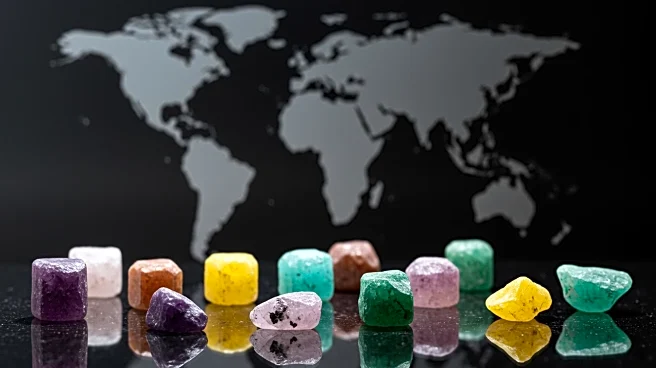What's Happening?
China has withheld its annual rare earth mining and smelting quotas, marking a significant shift in its approach to managing these critical resources. For the first time in over a decade, the quotas have been classified as 'security information,' leaving the global market without guidance on supply levels. This move has created uncertainty in the industry, which relies heavily on these quotas to gauge market conditions. The lack of transparency is causing price fluctuations and concerns about potential supply disruptions.
Why It's Important?
China's decision to keep rare earth quotas undisclosed has significant implications for global industries reliant on these materials, such as electronics, automotive, and renewable energy sectors. Rare earth elements are essential for manufacturing high-strength magnets used in electric vehicles and wind turbines. The opacity in China's quota announcements could lead to increased prices and supply chain challenges, prompting companies to seek alternative sources and stockpile materials. This development underscores the geopolitical leverage China holds over the rare earth market.
What's Next?
The industry is likely to experience increased volatility as stakeholders adjust to the new reality of uncertain supply levels. Companies may accelerate efforts to diversify their supply chains and invest in non-Chinese sources of rare earths. Governments and businesses might also increase funding for domestic production and research to mitigate reliance on Chinese exports. The situation could lead to strategic shifts in global trade policies and heightened competition for rare earth resources.
Beyond the Headlines
The secrecy surrounding China's rare earth quotas may signal broader geopolitical strategies, as these materials are crucial for technological advancements and national security. The move could be part of China's efforts to exert control over global supply chains and influence international markets. This development highlights the need for countries to develop resilient and diversified supply chains to reduce vulnerability to external pressures.












